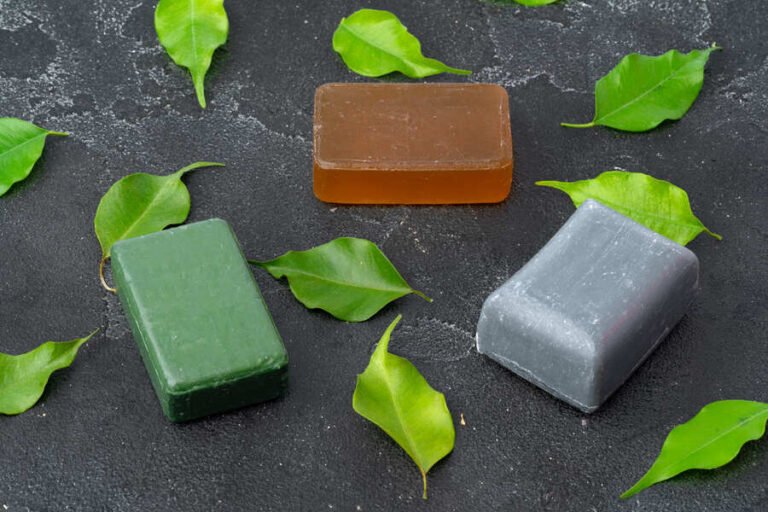Are you thinking about coloring your hair? Before you decide, it's crucial to understand the potential effects of ammonia in hair dye and explore other options.
Ammonia, a colorless gas, is commonly used in hair dye to raise the hair's pH level. However, excessive use can lead to skin irritation, burning, and dry, brittle hair. It can even enter your bloodstream and cause health issues.
While ammonia-free hair dyes may seem safer, they can still damage your hair and leave residues.
In this article, we'll delve into the risks and alternatives, so you can make an informed decision.
Key Takeaways
- Excessive use of ammonia hair dye can cause skin irritation, burning sensation, and redness on the scalp.
- Ammonia can permanently lift the cuticles, resulting in dry and brittle hair.
- Ammonia entering the bloodstream can lead to health conditions such as sinusitis, eye infections, throat infections, and respiratory problems.
- Ammonia-free hair dyes are not necessarily better for hair compared to traditional ammonia dyes.
Potential Skin Irritation and Burning Sensation
Excessive use of ammonia-free hair dye can cause potential skin irritation and a burning sensation on your scalp. This occurs because ammonia-free hair dyes still contain alkaline ingredients that can disrupt the pH balance of your scalp. When the pH level is altered, it can lead to skin irritation, redness, and discomfort.
To prevent these issues, it's important to limit the frequency of hair dye application and follow the instructions provided by the manufacturer. Additionally, soothing treatments such as applying aloe vera gel or a cool compress can help alleviate any discomfort. It's also advisable to perform a patch test before using any hair dye to check for any potential allergic reactions.
Damaging Effects on Hair Cuticles
To understand the damaging effects of ammonia-free hair dye on your hair cuticles, let's delve into the process of how hair cuticles are affected by these products.
- Hair damage from ammonia in hair dye:
Ammonia-based hair dyes can lift the hair cuticles, causing them to become dry and brittle. This can lead to breakage, split ends, and overall weakened hair strands.
- Impact of ammonia-free hair color on hair health:
Although ammonia-free hair dyes are marketed as a safer alternative, they still contain alkaline ingredients that can lift the cuticles. While these ingredients, such as ethanolamine, have larger molecules than ammonia, they can still penetrate the hair shaft and cause damage.
- Overall, both ammonia-based and ammonia-free hair dyes have the potential to damage hair cuticles, resulting in weakened and compromised hair health. It's important to be mindful of the ingredients in hair dyes and consider alternative options that minimize the risk of hair damage.
Health Risks Associated With Ammonia Exposure
Ammonia exposure can pose several health risks, so it's important to be aware of the potential dangers associated with this chemical.
Inhalation of ammonia can cause irritation to the respiratory system, including the throat, nose, and lungs. Prolonged exposure to ammonia fumes may lead to chronic respiratory conditions such as bronchitis and asthma.
Additionally, ammonia exposure can irritate the eyes, causing redness, itching, and burning sensations. Long-term inhalation of ammonia can have more serious health effects, including damage to the respiratory and cardiovascular systems.
Studies have also suggested a possible link between ammonia exposure and an increased risk of certain cancers, although more research is needed to establish a definitive connection.
It's crucial to take necessary precautions to minimize ammonia exposure, such as using proper ventilation and wearing protective equipment.
Comparison: Ammonia-Free Vs Ammonia-Based Hair Dyes
First, let's compare the benefits and drawbacks of using ammonia-free and ammonia-based hair dyes:
- Benefits of Ammonia-Free Dyes:
- Ammonia-free hair dyes are less likely to cause skin irritation, burning sensation, and redness on the scalp.
- They don't permanently lift the cuticles, resulting in healthier and less dry hair.
- Ammonia-free dyes reduce the risk of health conditions associated with ammonia exposure, such as sinusitis, eye infections, throat infections, and respiratory problems.
- Long-Term Effects of Ammonia Exposure:
- Excessive and repetitive exposure to ammonia in hair dyes can lead to damage to the hair shaft, making it dry, brittle, and prone to breakage.
- Ammonia entering the bloodstream can have systemic effects on overall health.
- Prolonged exposure to ammonia may increase the risk of developing respiratory issues and other health complications.
It is important to weigh the benefits and drawbacks of both ammonia-free and ammonia-based hair dyes to make an informed decision about which option is best for you.
Limitations of Ammonia-Free Hair Color
When considering ammonia-free hair color, you should be aware of some limitations and drawbacks. While these hair dyes are marketed as a safer alternative to ammonia-based dyes, they still have their own potential hair damage risks.
Ammonia-free dyes may not provide the same vibrant and long-lasting color as ammonia-based dyes. Additionally, the Environmental Working Group has expressed concerns about the safety of certain ingredients used in ammonia-free dyes. Allergic reactions can still occur with these dyes as well.
It's important to note that even though ammonia-free dyes don't contain ammonia, they still contain alkaline ingredients that can lift the cuticles and cause damage to the hair. For those concerned about hair damage, alternative hair dyes without alkaline ingredients can be considered.
Concerns About Ingredients in Ammonia-Free Dyes
When using ammonia-free dyes, you should be aware of the potential risks and concerns associated with the ingredients. Here are three concerns to consider:
- Potential allergic reactions: While ammonia-free dyes may be gentler on the scalp, they still contain other chemicals that can trigger allergic reactions. Ingredients like ethanolamine, diethanolamine, and triethanolamine have the potential to cause skin irritation, itching, and redness. It's important to perform a patch test before using any new hair dye to check for any adverse reactions.
- Concerns about long term effects: The long-term effects of using ammonia-free hair dyes are still being studied. Some research suggests that repetitive use of hair dye with ammonia alternatives, such as ethanolamine, may contribute to hair loss. Additionally, the Environmental Working Group has raised concerns about certain ingredients used in ammonia-free dyes, highlighting the need for further research into their safety.
- Alternative options: For those concerned about the potential risks associated with ammonia-free dyes, there are alternative hair dyes available. Organic or vegan hair dyes often contain fewer harmful chemicals and more natural ingredients. These alternatives may be worth considering for individuals seeking a safer and more sustainable option for hair coloring.
Negative Effects of Ammonia Alternatives on Hair
To understand the negative effects of ammonia alternatives on your hair, it's important to consider the potential risks and drawbacks associated with these alternative ingredients.
While ammonia-free hair dyes may seem like a safer option, they still come with their own set of concerns. One of the main risks is the potential for hair loss. Repetitive use of hair dye with ammonia alternatives, such as ethanolamine, diethanolamine, and triethanolamine, has been linked to hair loss over time.
Additionally, these alternatives can irritate the skin, eyes, and respiratory tract, causing discomfort and potential long-term effects.
It's crucial to be aware of these risks and consider alternative options, such as organic or vegan hair dyes with fewer harmful chemicals and more natural ingredients, to minimize the potential negative effects on your hair.
Safer Alternatives to Ammonia-Based Dyes
If you're looking for a safer alternative to ammonia-based dyes, consider trying hair color options that are free from harsh chemicals. Here are three benefits of organic hair dyes that you should know:
- Gentle on the hair: Organic hair dyes use natural ingredients that are less damaging to the hair than ammonia-based dyes. They don't strip away the natural oils and moisture, leaving your hair healthier and more vibrant.
- Reduced risk of long-term effects: Exposure to ammonia in hair dyes over a long period of time can have detrimental effects on your health. By choosing organic dyes, you minimize your exposure to harmful chemicals and reduce the risk of developing respiratory problems, sinusitis, and other health issues associated with ammonia exposure.
- Environmentally friendly: Organic hair dyes are often made with sustainably sourced ingredients and biodegradable packaging. By opting for organic options, you contribute to the preservation of the environment and support eco-friendly practices in the beauty industry.
Make a conscious choice and switch to organic hair dyes for a safer and more sustainable coloring experience.
Frequently Asked Questions
Are There Any Long-Term Effects of Potential Skin Irritation and Burning Sensation Caused by Ammonia Hair Dye?
Long-term effects of ammonia hair dye, such as potential skin irritation and burning sensation, can be concerning. Safety concerns also surround ammonia-free hair color. Consider organic or vegan alternatives for healthier hair options.
How Does Ammonia Permanently Lift the Cuticles and What Are the Consequences for the Hair?
When ammonia is used in hair dye, it lifts the cuticles of your hair, which can lead to dryness and brittleness. This can have negative effects on your hair health. Consider the benefits of ammonia-free hair color as an alternative.
Can Exposure to Ammonia in Hair Dye Lead to More Serious Health Conditions Than Just Sinusitis, Eye Infections, Throat Infections, and Respiratory Problems?
Exposure to ammonia in hair dye can lead to more serious health conditions than just sinusitis, eye infections, throat infections, and respiratory problems. Ammonia exposure risks include skin irritation, burning sensation, and redness, as well as potential long-term damage to the hair and harmful effects on the bloodstream.
Besides the Difference in Color Vibrancy and Longevity, What Other Factors Should Be Considered When Comparing Ammonia-Free and Ammonia-Based Hair Dyes?
When comparing ammonia-free and ammonia-based hair dyes, consider factors beyond color vibrancy and longevity. Health risks associated with ammonia alternatives, including skin irritation and hair loss, should also be taken into account.
What Are the Specific Limitations or Drawbacks of Using Ammonia-Free Hair Color, Especially in Terms of Hair Damage and Safety?
Ammonia-free hair color may not be better for your hair and has risks. It can still cause damage and allergic reactions. Some ingredients used in these dyes may not be safe. Consider organic or vegan alternatives for hair dye safety and less hair damage.
Conclusion
In conclusion, while ammonia-free hair dyes may be marketed as a safer alternative to ammonia-based dyes, it's important to consider the potential risks and limitations. These dyes can still cause skin irritation and damage the hair cuticles.
Additionally, concerns about the ingredients in ammonia-free dyes and their potential build-up on the hair should be taken into account. It's crucial to explore safer alternatives to ammonia-based dyes to ensure the health and vitality of your hair.







